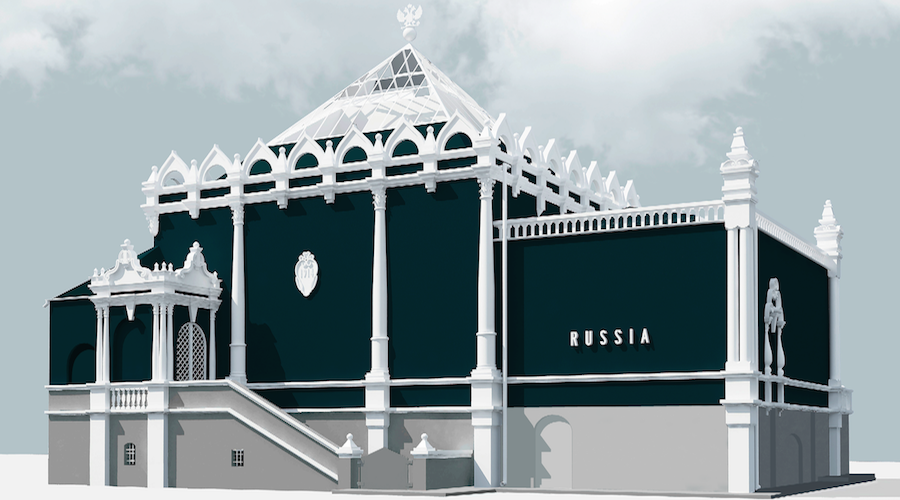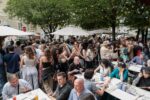56. Biennale – Irina Nakhova

Irina Nakhova rappresenta la Russia alla 56. Biennale di Venezia col progetto The Green Pavilion.
Comunicato stampa
The Russian Pavilion at the 56th Venice Biennale in 2015 will present Irina Nakhova's (b. 1955, Moscow) Green Pavilion. The artist has made a significant contribution to the tradition of Russian conceptualism, starting with her work in the 1970s. She transforms Russian conceptualism's logocentric model, communicating the particularly emotional drama characteristic of representatives of late modernism. Nakhova created a series of Rooms (five installations, 1983-1988), the first such installations in contemporary Russian art. In making them she used one of the rooms in her apartment. Nakhova's Rooms anticipated Ilya Kabakov's "total installations", but unlike his work, which imitated the world of the communal apartment, her installations showed a direct link to their painterly origin, presenting original, three-dimensional pictures and an effectively structured aesthetic space. It was this combination of a rational-structural approach with living, unstable sensuality, of a refined conceptual inventiveness and principled multimediality with a thirst for visual pleasure, which defined the future development of the artist. Together with Pavilion curator Margarita Tupitsyn, an internationally-acclaimed expert on both the Russian avant-garde and contemporary art, Irina Nakhova will create an ambitious project for the Russian Pavilion, one which references an extremely important period in the history of Russian art and actively stimulates its interpretation of the art historical and architectural order.This year visitors will see a green Russian Pavilion. It will be considerably closer to the pavilion which first appeared more than 100 years ago. And this is not the only reference to the history of our country's participation in the Venice Biennale. Architect Aleksei Shchusev's intention was to create a uniquely functional building which would be able to accommodate a whole range of exhibitions. Thanks to Irina Nakhova, visitors will have the opportunity to judge those qualities of Schusev's pavilion which have until now remained hidden, and the potential of the building to bring together contemporary Russian art, the latest technology and Russian architecture.Divided in to five separate spaces, the interior of the pavilion naturally returns Nakhova to her own version of room spaces (as seen in her earlier installations), where the consciousness of the viewer becomes a participant in an artistic experiment. In room number 1 the artist projects on herself the futuristic image of a pilot. The combination of impenetrability (thanks to a glass helmet) and control over the perceptions and movements of the viewer reveals the duality of the artist's position in society. On the one hand the artist has authority and on the other they are too dependent on the external world from which they hide, but simultaneously wish to control. In room number 2 the viewer comes in to contact with Malevich's black square, the most enigmatic phenomenon in the history of modernism. This work depends entirely on the imagination of the viewer as it is abstract., i.e. it does not have a formal or object iconography. Nakhova's aim is to reveal the fact that the black square depends on perception and to demonstrate this quality as strongly as possible. Depending on the viewing position the square becomes either illusory, as if joined to the cosmic space, or loses its transparency, creating the effect of a solar eclipse. In room number 3 painting splashes outside the confines of the stretcher, acting on the viewer by means of the pressure of two colours which are important in the history of Russian art: revolutionary red and perestroika green. The characteristics of the two epochs are communicated exclusively through the use of colour and form, reminding the viewer of the social potential of abstract art. In the crypt, which can be seen from the upper floor, Nakhova's video creates an architectural "matrix" of Shchusev's buildings, including Lenin's mausoleum. This matrix is filled with archive photographs, mixed with video film of natural and biological factors, at times alienating and reminding the viewer how vulnerable the artistic image of history can be. Commissioner: Stella Kesaeva
Curator: Margarita Tupitsyn Special event: May 6, 1pm, opening
Artists:
Irina Nakhova



